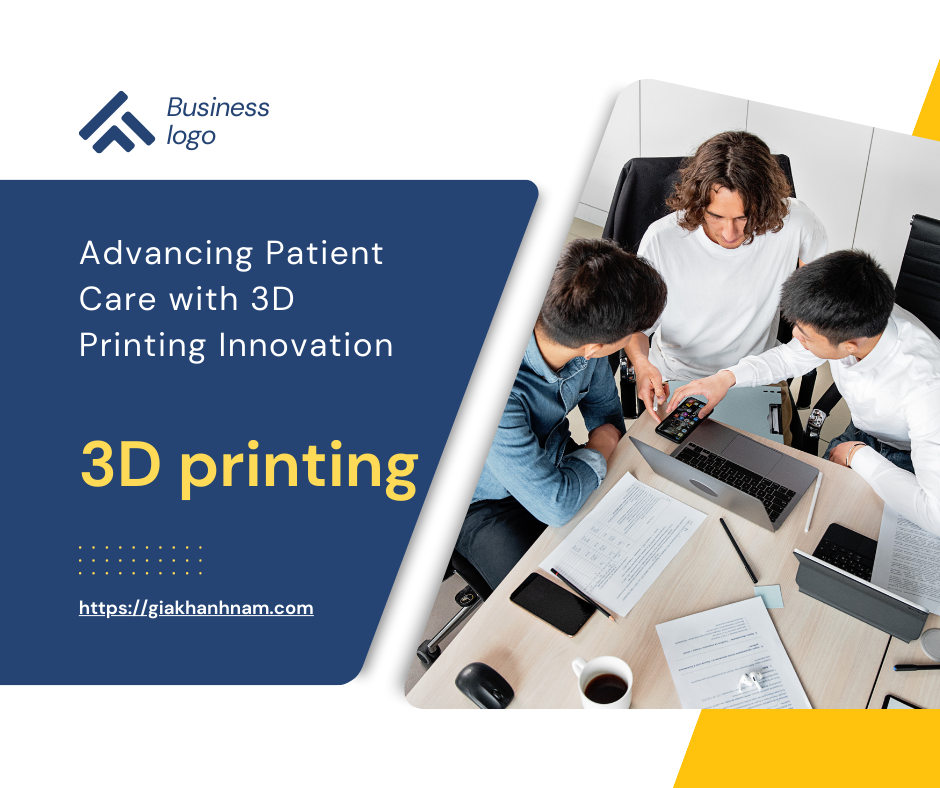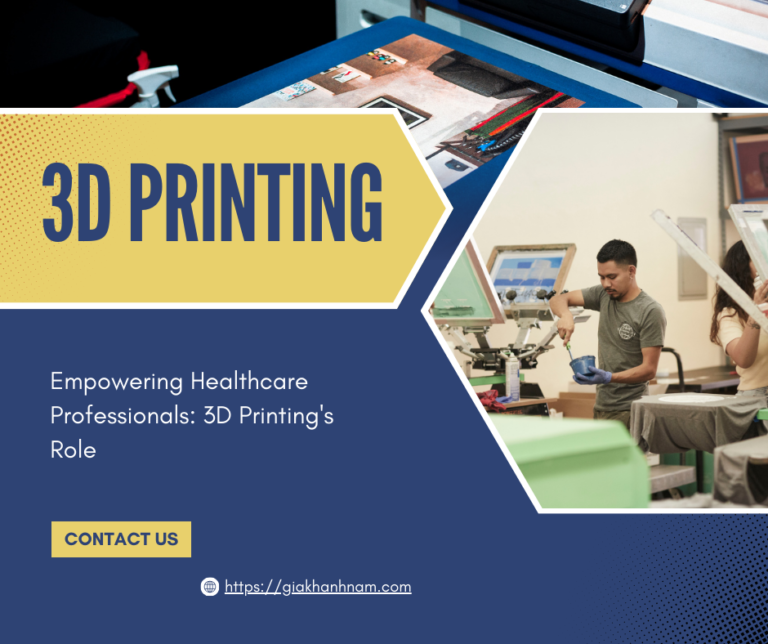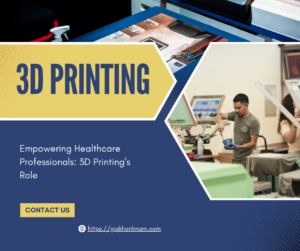Introduction:
In the realm of healthcare, technological innovations are continuously reshaping the landscape of patient care. Among these transformative technologies, 3D printing stands out as a remarkable tool that is revolutionizing the way healthcare professionals provide treatment and improve patient outcomes. In this article, we delve into the fascinating world of 3D printing innovation and its profound impact on advancing patient care.
The Power of Personalization:
One of the most significant contributions of 3D printing to patient care is personalization. Traditional healthcare often relies on standardized solutions, but each patient is unique. 3D printing allows healthcare professionals to create patient-specific medical devices, implants, and anatomical models. This level of personalization ensures that treatments are tailored precisely to the individual’s needs.
For example, orthopedic surgeons can use 3D printing to craft custom implants that perfectly fit a patient’s bone structure. This not only improves the effectiveness of the implant but also accelerates recovery times and reduces the risk of complications.
Enhancing Preoperative Planning:
3D printing technology has ushered in a new era of preoperative planning. Surgeons can now have access to 3D-printed models of a patient’s anatomy before stepping into the operating room. These lifelike models provide invaluable insights, allowing surgeons to practice complex procedures and strategize their approach.
This enhanced preparation minimizes surgical errors, reduces surgery time, and enhances overall patient safety. For complex surgeries involving delicate structures like the brain or heart, 3D-printed models are becoming indispensable tools for healthcare professionals.
Transforming Medical Education:
3D printing is also making waves in medical education. Medical schools and training programs are incorporating 3D-printed anatomical models into their curriculum. These models offer a hands-on learning experience that significantly improves students’ understanding of complex anatomical structures and surgical techniques.
Furthermore, 3D-printed models allow aspiring surgeons to practice surgical procedures repeatedly, refining their skills in a risk-free environment. This not only accelerates the learning process but also contributes to better patient outcomes in the long run.
Innovative Prototyping and Research:
The versatility of 3D printing extends beyond patient care; it also fuels medical research and innovation. Researchers can utilize 3D printing to create accurate replicas of organs and tissues for drug testing and disease modeling. These models serve as essential tools in drug development, enabling researchers to study the effects of new medications on realistic tissue structures.
Moreover, 3D bioprinting is on the horizon, holding the promise of revolutionizing organ transplantation. Scientists are actively working on bioprinting functional organs and tissues using a patient’s own cells. This breakthrough could potentially eliminate organ shortages and save countless lives in the future.
Cost-Effective Solutions:
In addition to personalization and innovation, 3D printing offers cost-effective solutions for healthcare. Traditional manufacturing processes for medical devices and implants can be expensive and time-consuming. With 3D printing, the production process is streamlined, reducing costs and accelerating the development of medical innovations.
3D printing also has the potential to provide cost-effective solutions in resource-constrained environments. Remote or underserved areas can benefit from on-site 3D printing of essential medical supplies, such as prosthetics, dental implants, and customized hearing aids.
Addressing Challenges and Future Prospects:
Despite the immense potential and benefits of 3D printing in healthcare, several challenges and future prospects deserve attention.
1. Regulatory Framework:
- The regulatory landscape surrounding 3D printing in healthcare is evolving. It’s crucial to establish comprehensive guidelines to ensure the safety, quality, and effectiveness of 3D-printed medical devices and implants. Regulatory bodies worldwide must continue working collaboratively with the industry to refine and adapt regulations.
2. Data Security and Privacy:
- Patient data security and privacy are paramount in healthcare. As 3D printing generates and utilizes patient-specific data, robust measures must be in place to protect sensitive information, preventing unauthorized access and data breaches.
3. Materials Advancements:
- Continued research and development in 3D printing materials are essential. The emergence of biocompatible and biodegradable materials is paving the way for even more versatile applications, particularly in tissue engineering and bioprinting.
4. Accessibility and Equity:
- Ensuring that 3D printing technology is accessible and affordable to a broad range of healthcare facilities and patients is vital. Initiatives should be undertaken to bridge the gap between resource-rich and resource-poor regions, thereby improving global healthcare equity.
5. Ethical Considerations:
- Ethical questions surrounding 3D printing in healthcare, such as informed consent and the responsible use of bioprinting, need ongoing examination and discussion within the medical community and society at large.
6. Further Integration:
- The integration of 3D printing into various healthcare specialties, including dentistry, ophthalmology, and cardiology, holds immense potential. Exploring these avenues could lead to breakthroughs in patient care and treatment options.




















+ There are no comments
Add yours